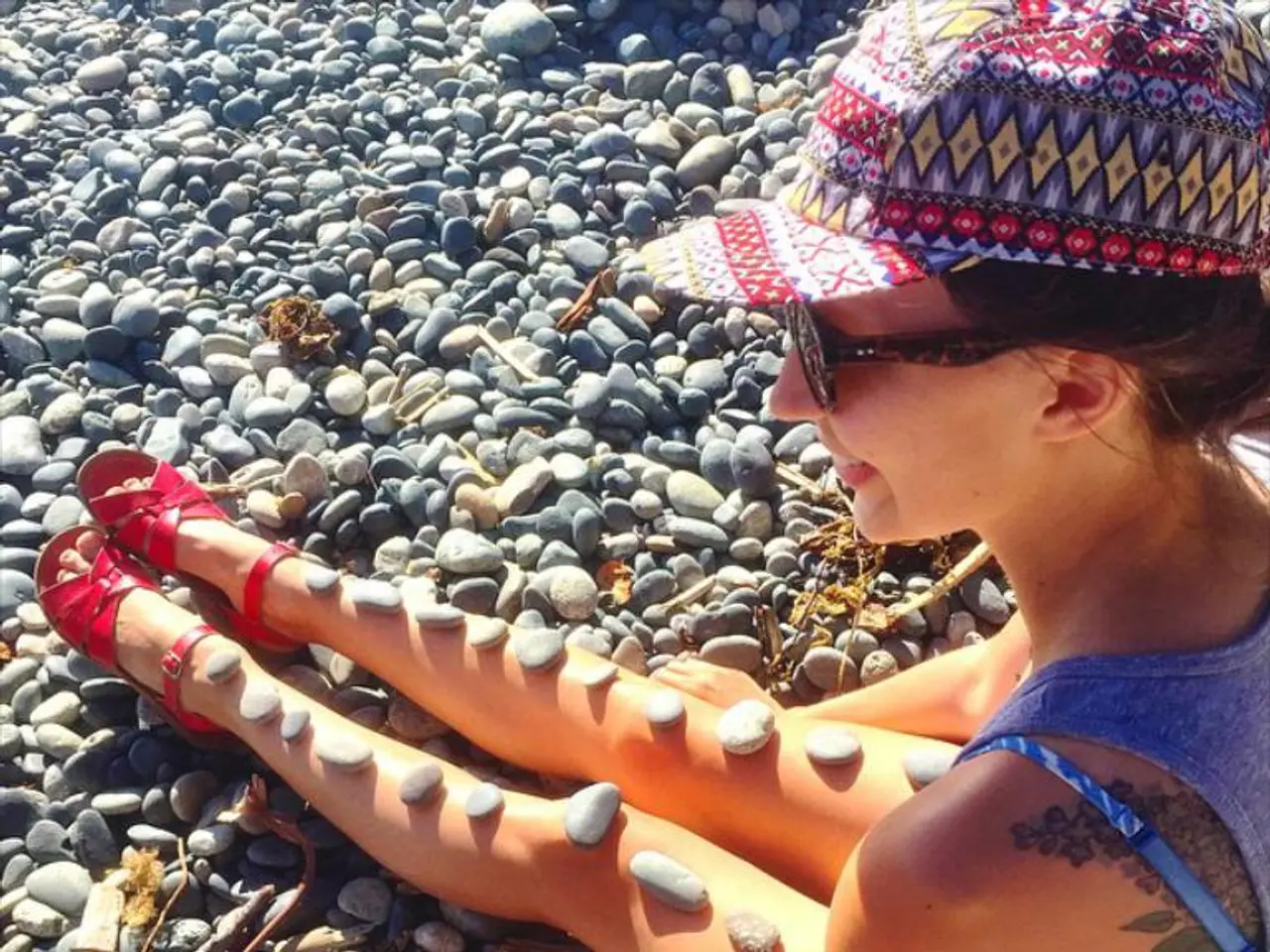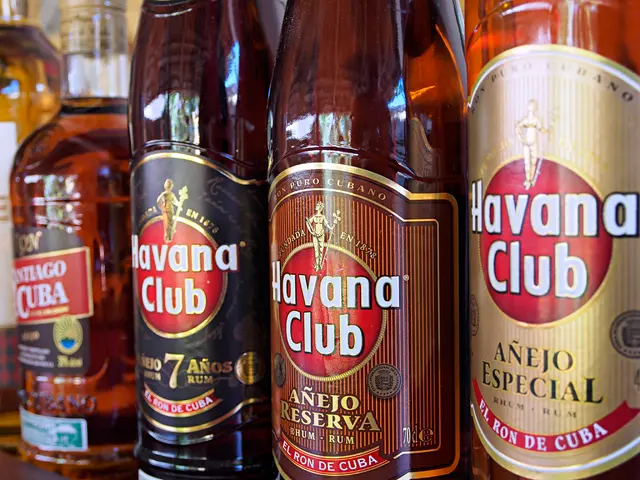Experiencing Urinary Stones Found to Be Equivalent to Childbirth Intensity
In recent years, the prevalence of kidney stone disease has significantly increased, particularly in Western industrialized nations like Germany. One in twenty Germans is affected by kidney stones at least once in their life, with around 1.2 million people currently undergoing treatment or having recently completed treatment for the condition.
The factors contributing to this rise are multifaceted and complex, involving lifestyle, genetic, environmental, and healthcare-related elements.
**Lifestyle Changes**
High-sodium diets, increased consumption of processed foods, and a lack of water intake contribute to the formation of kidney stones. Dehydration can lead to more concentrated urine, which increases the risk of stone formation. Additionally, less physical activity and more time spent sitting can contribute to metabolic disorders and obesity, both of which are linked to kidney stone formation.
**Genetic and Environmental Factors**
There is a genetic component to the development of kidney stones, with certain populations being more prone due to genetic predispositions. The prevalence is higher in regions such as Southeast Asia, South Asia, and parts of Western Asia, where the tropical climate may contribute to higher fluid loss and concentration of urine.
**Metabolic Disorders**
Conditions like obesity, diabetes, and metabolic syndrome are on the rise in Western countries and are associated with an increased risk of developing kidney stones.
**Demographic Changes**
As populations age, the risk of developing kidney stones increases, contributing to higher prevalence rates. Improved diagnostic techniques may also contribute to the perceived increase in prevalence. Wider access to healthcare in Western industrialized nations means more people are being diagnosed and treated for kidney stones, which can inflate the apparent prevalence.
**Addressing the Issue**
To prevent kidney stones, one should drink more than two liters of water daily, spread out over the day, and maintain a balanced diet, weight loss, and regular exercise. For urinary acid stones, weight reduction and eating less acid-rich foods like red meat are important. The urine can also be alkalinized with light medication and through diet. Dietary recommendations vary depending on the type of kidney stone. For calcium oxalate stones, limiting oxalate-rich foods like rhubarb, spinach, and black tea is important.
Urinary retention, colic, and threatened blood poisoning are urological emergencies requiring immediate action. Openly operating on kidney stones is rare today, only performed when other methods fail.
In cases where a patient has symptoms, other illnesses, or a stone that could lead to colic, medical attention is necessary. Individualized advice is necessary for preventing and managing kidney stones due to the variety of factors involved.
The pandemic has had a negative impact on the prevalence of kidney stone disease due to less physical activity and weight gain. It is crucial to address these lifestyle factors to help mitigate the risk of kidney stone formation.
- Science has been seeking to understand the factors contributing to the rise in kidney stone disease, a condition that affects one in twenty Germans.
- Science is investigating the links between lifestyle, genetic, environmental, and healthcare factors in the increased prevalence of kidney stone disease.
- High-sodium diets, increased consumption of processed foods, and dehydration due to inadequate water intake are among the lifestyle factors that contribute to kidney stone formation.
- Less physical activity and more time spent sitting can lead to metabolic disorders and obesity, both of which are associated with an increased risk of kidney stones.
- There is a genetic component to the development of kidney stones, making certain populations more prone due to genetic predispositions.
- The tropical climate in regions like Southeast Asia, South Asia, and parts of Western Asia may increase the fluid loss and concentration of urine, contributing to a higher prevalence of kidney stones.
- Conditions like obesity, diabetes, and metabolic syndrome, which are on the rise in Western countries, are linked to an increased risk of kidney stones.
- As populations age, the risk of developing kidney stones increases, contributing to higher prevalence rates.
- Improved diagnostic techniques and wider access to healthcare in Western industrialized nations may lead to more people being diagnosed and treated for kidney stones, inflating the apparent prevalence.
- To prevent kidney stones, it's recommended to drink more than two liters of water daily, maintain a balanced diet, weigh less, and engage in regular exercise.
- For urinary acid stones, weight reduction and eating less acid-rich foods like red meat are crucial.
- The urine can be alkalinized with light medication and through diet, depending on the type of kidney stone.
- Dietary recommendations for preventing kidney stones vary depending on the type of kidney stone.
- For calcium oxalate stones, limiting oxalate-rich foods like rhubarb, spinach, and black tea is important.
- Urinary retention, colic, and threatened blood poisoning are urological emergencies requiring immediate medical attention.
- Openly operating on kidney stones is rare today, performed only when other methods fail.
- In cases where a patient has symptoms, other illnesses, or a stone that could lead to colic, medical attention is necessary.
- Individualized advice is necessary for preventing and managing kidney stones due to the variety of factors involved.
- The pandemic has worsened the prevalence of kidney stone disease due to less physical activity and weight gain.
- Addressing lifestyle factors such as diet, exercise, and weight management is crucial to help mitigate the risk of kidney stone formation.
- Workplace wellness initiatives can play a role in addressing the rise in kidney stone disease by promoting healthy lifestyles and reducing sedentary behavior.
- For patients with chronic medical conditions like diabetes or metabolic syndrome, close management by medical professionals is essential to minimize the risk of kidney stones.
- Chronic kidney disease, cancer, respiratory conditions, digestive health, eye health, hearing, mental health, mens' health, women's health, skin care, and autoimmune disorders are other health and wellness concerns that should not be overlooked.
- Fitness and exercise, sexual health, and cardiovascular health are also crucial components of overall health and wellness.
- Therapies and treatments for kidney stones, as well as other medical conditions, have evolved over the years to provide more minimally invasive options for patients.
- Nutrition plays a vital role not only in preventing kidney stones but also in managing chronic diseases, aging, and promoting overall health and wellness.
- Aging populations, expanding healthcare industries, and advancements in medical care will continue to shape the landscape of kidney stone treatment and management in the future.
- Investing in research to understand the root causes and develop effective prevention strategies for kidney stone disease can lead to improved health outcomes and reduced healthcare costs in the long run.




